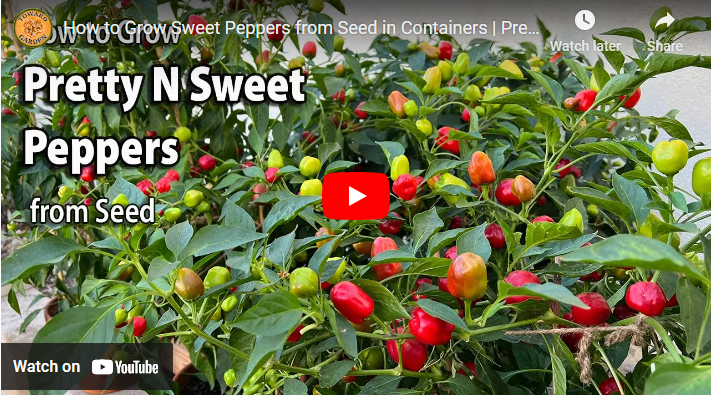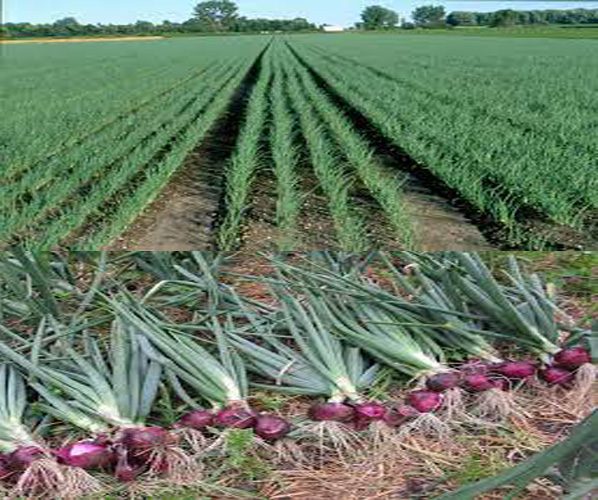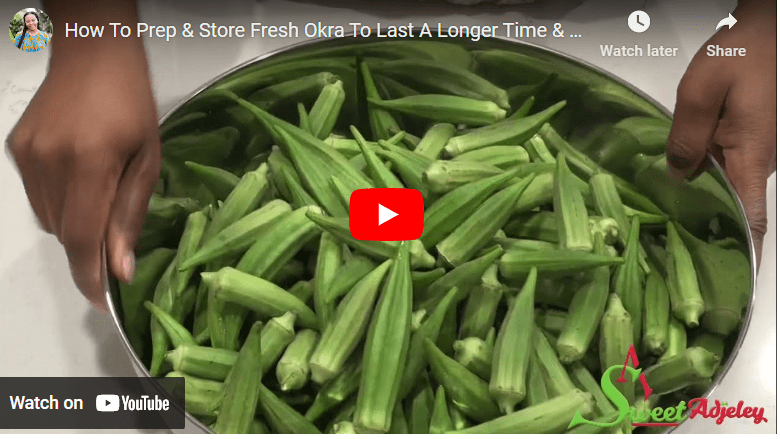Are you a fan of sweet peppers? Do you enjoy the vibrant colors, crisp textures, and delightful flavors they bring to your culinary creations? If so, why not try growing your own sweet peppers in the comfort of your own backyard? Not only will you have a fresh supply of these tasty vegetables at your fingertips, but you’ll also experience the joy and satisfaction of nurturing plants from seed to harvest.
In this comprehensive guide, we will take you through the step-by-step process of growing sweet peppers, providing you with expert advice and practical tips along the way. So, roll up your sleeves, grab your gardening tools, and let’s dive into the wonderful world of sweet pepper cultivation!
How to Grow Sweet Peppers Step By Step Guide: A Comprehensive and Easy-to-Follow Tutorial
Step 1: Choosing the Right Pepper Varieties
Before you embark on your sweet pepper growing journey, it’s essential to select the right pepper varieties that suit your preferences and growing conditions. There are numerous sweet pepper varieties to choose from, each with its own unique characteristics. Here are a few popular options to consider:
Read Also: [Beginners Guide] How To Grow Eastern Red Cedar
Bell Peppers:
These are the most common sweet peppers, known for their blocky shape, thick flesh, and mild flavor. They come in various colors, including green, red, yellow, and orange.
Miniature Sweet Peppers:
Perfect for small gardens or container gardening, these peppers are bite-sized and packed with flavor. They are available in different colors, making them visually appealing in salads and snacks.
Read Also: [Beginners Guide] How To Grow Cinnamon Indoor
Italian Sweet Peppers:
These elongated peppers have a sweet and fruity taste, ideal for grilling or roasting. They are typically bright red or yellow and add a burst of flavor to Mediterranean dishes.
Pimento Peppers:
If you’re a fan of stuffed peppers, pimento peppers are a great choice. They have a heart-shaped appearance, thick walls, and a mild, sweet flavor.
Read Also: How To Grow Tomatoes In Grow Bag [Expert Tips]
Cubanelle Peppers:
Hailing from Cuba, these peppers are popular in Latin American cuisine. They have a slightly spicy taste and are often used in frying, stuffing, or salads.
Remember to choose pepper varieties that are well-suited to your climate, as some peppers thrive in warm temperatures, while others prefer cooler conditions. Consult local gardening resources or nurseries for advice on the best varieties for your area.
Read Also: [Beginners Guide] How To Grow Cinnamon Basil
Step 2: Preparing the Soil
To ensure the success of your sweet pepper plants, it’s crucial to prepare the soil properly. Sweet peppers thrive in well-draining soil rich in organic matter. Follow these steps to prepare your soil:
Choose the Right Location:
Select a sunny spot in your garden that receives at least 6-8 hours of direct sunlight each day. Sweet peppers love the warmth and need ample sunlight to grow and produce fruit.
Read Also: [Beginners Guide] How To Grow Badam From Seed
Clear the Area:
Remove any weeds, rocks, or debris from the planting area. Weeds compete with your sweet pepper plants for nutrients and water, so it’s important to create a clean and weed-free environment.
Loosen the Soil:
Use a garden fork or tiller to loosen the soil to a depth of about 8-10 inches. This will improve drainage and allow the pepper roots to penetrate the soil easily.
Read Also: [Beginners Guide] How To Grow Ceylon Cinnamon
Amend the Soil:
Sweet peppers thrive in soil that is rich in organic matter. Add compost, well-rotted manure, or organic fertilizer to enrich the soil with nutrients. Aim for a balanced pH level between 6.0 and 7.0.
Mix in Mulch:
Apply a layer of organic mulch, such as straw or wood chips, around the pepper plants once they are established. Mulch helps conserve moisture, suppress weeds, and regulate soil temperature.
Read Also: [Beginners Guide] How To Grow Aloe Vera
By preparing the soil adequately, you provide your sweet pepper plants with a healthy foundation for growth and development.
Step 3: Nursing Seeds Indoors
To get a head start on your sweet pepper growing season, it’s recommended to start your seeds indoors, especially if you live in an area with a shorter growing season. Here’s a step-by-step guide on starting sweet pepper seeds indoors:
Timing:
Start your seeds indoors about 8-10 weeks before the last expected frost date in your area. Sweet peppers require a longer growing season, so an early start ensures they have enough time to mature and produce fruit.
Read Also: [Beginners Guide] How to Grow Almond Tree from Seed
Seed Trays or Pots:
Use seed trays or small pots with drainage holes to sow your sweet pepper seeds. Fill them with a seed starting mix or a combination of peat moss and vermiculite.
Planting the Seeds:
Plant 2-3 seeds in each cell or pot, about ¼ inch deep. Gently cover the seeds with the planting mix and water them lightly.
Warmth and Moisture:
Place the seed trays or pots in a warm location, ideally around 70-80°F (21-27°C). Use a plastic cover or a clear plastic bag to create a greenhouse effect and maintain moisture levels.
Read Also: [Beginners Guide] How To Grow Spinach In Pots
Germination:
Sweet pepper seeds typically germinate within 7-14 days. Once the seedlings emerge, remove the plastic cover and place them in a location with bright, indirect sunlight.
Thinning and Transplanting:
When the seedlings have developed their first true leaves, thin them by removing the weakest ones, leaving only the strongest seedling in each cell or pot.
By starting your sweet pepper seeds indoors, you give them a head start and increase the chances of a successful and bountiful harvest.
Read Also: [Beginners Guide] How To Grow Vanilla Orchid At Home
Step 4: Transplanting Seedlings
After your sweet pepper seedlings have grown to a suitable size and the threat of frost has passed, it’s time to transplant them into your garden or containers. Follow these steps for a smooth transplanting process:
Harden Off Seedlings:
About a week before transplanting, gradually expose your seedlings to outdoor conditions. Start by placing them in a sheltered area for a few hours a day, gradually increasing their exposure to sunlight and outdoor elements.
Read Also: [Practical Guide] How To Grow Okra From Seed To Harvest
Spacing:
Sweet pepper plants require adequate spacing for proper air circulation and growth. Leave about 18-24 inches between plants and maintain a row spacing of 24-36 inches.
Read Also: [Beginners Guide] How To Grow Potatoes
Digging Holes:
Dig holes in the prepared soil that are slightly larger than the root balls of your seedlings. The holes should be deep enough to accommodate the roots without bending or crowding.
Transplanting Process:
Gently remove the seedlings from their containers, being careful not to damage the delicate roots. Place each seedling in a prepared hole, ensuring that the soil level matches the level of the seedling’s stem.
Read Also: [Beginners Guide] How To Grow Curry Leaves in the US
Backfilling and Firming:
Fill the hole with soil, gently firming it around the seedling to eliminate air pockets. Avoid compacting the soil too tightly, as this can hinder root development.
Watering:
Give each transplanted seedling a thorough watering to help settle the soil around the roots and provide essential moisture.
Read Also: [Beginners guide] How to Successfully Grow Palm Trees from Seeds
Stake or Cage Support:
If you’re growing larger sweet pepper varieties or expect your plants to bear heavy fruit, consider providing support in the form of stakes or cages. This will help prevent the plants from toppling over as they grow.
Mulching:
Apply a layer of mulch around the base of the transplanted seedlings to conserve moisture and suppress weed growth.
By transplanting your seedlings carefully and providing the necessary support, you ensure their successful establishment in the garden or containers.
Read Also: How to Grow Ginger [Complete Growing Manual]
Step 5: Providing Optimal Growing Conditions
Sweet peppers thrive in specific growing conditions that promote healthy growth and maximize fruit production. Here’s how to create optimal conditions for your sweet pepper plants:
Sunlight:
Sweet peppers require a minimum of 6-8 hours of direct sunlight each day. Ensure that your plants are positioned in a sunny spot in your garden or place your containers in a location that receives ample sunlight.
Temperature:
Sweet peppers prefer warm temperatures between 70-85°F (21-29°C) during the day and slightly cooler temperatures around 60-70°F (15-21°C) at night. Protect your plants from temperature extremes and frost, as they are sensitive to cold.
Read Also: [Beginners Guide] How To Grow Onions: Complete Handbook
Wind Protection:
Strong winds can damage sweet pepper plants or cause them to lean. Consider planting them near a windbreak or providing temporary wind protection using stakes or screens.
Air Circulation:
Good air circulation around the plants helps prevent the development of fungal diseases. Avoid overcrowding your plants and maintain adequate spacing between them.
pH Level:
Sweet peppers prefer slightly acidic to neutral soil with a pH range of 6.0-7.0. Regularly test the soil pH and make necessary adjustments using organic amendments or pH-adjusting products.
Providing the optimal growing conditions for your sweet pepper plants ensures healthy growth, vigorous foliage, and abundant fruit production.
Step 6: Watering and Fertilizing
Proper watering and fertilization are key factors in the successful cultivation of sweet peppers. Here’s what you need to know:
Watering:
Sweet peppers require consistent moisture throughout the growing season. Water deeply and evenly, ensuring that the soil remains consistently moist but not waterlogged. Avoid overwatering, as it can lead to root rot.
Mulch:
Apply a layer of organic mulch around the base of your sweet pepper plants to help retain moisture in the soil and reduce water evaporation.
Fertilizing:
Sweet peppers are heavy feeders and benefit from regular fertilization. Use a balanced fertilizer or organic compost to provide essential nutrients. Start fertilizing when the plants begin to flower and continue every 4-6 weeks throughout the growing season.
Feeding Schedule:
Follow the recommended feeding schedule for your chosen fertilizer, ensuring that you provide a balanced mix of nitrogen, phosphorus, and potassium. Adjust the application rate based on the manufacturer’s instructions.
Organic Options:
If you prefer organic gardening, consider using compost, aged manure, or organic fertilizer blends specifically formulated for vegetable crops. These options provide a slow release of nutrients and improve soil health.
Side-Dressing:
As your sweet pepper plants grow, you can side-dress them with compost or additional organic fertilizer to replenish nutrients throughout the season. Apply the amendments around the base of the plants, taking care not to damage the roots.
Proper watering and fertilization practices will ensure that your sweet pepper plants receive the nutrients they need for healthy growth and prolific fruit production.
Step 7: Managing Pests and Diseases
While sweet peppers are relatively resilient, they can still fall victim to pests and diseases. Here are some common problems and strategies for managing them:
Aphids:
These tiny insects can suck the sap from the leaves, causing wilting and distortion. Use a strong spray of water to dislodge them or apply insecticidal soap or neem oil if the infestation is severe.
Fruitworms:
These pests bore into the fruits, causing damage and reducing quality. Monitor your plants regularly and handpick any affected fruits. Consider using row covers or organic insecticides to control fruitworm populations.
Bacterial Spot:
This disease manifests as small, dark spots on the leaves and fruit. Practice good sanitation by removing and destroying infected plant material. Avoid overhead watering to minimize disease spread.
Fungal Diseases:
Diseases like powdery mildew and blossom end rot can affect sweet peppers. Apply fungicides labeled for vegetable use to prevent and control fungal infections. Ensure proper air circulation and spacing between plants to reduce humidity.
Crop Rotation:
Practice crop rotation by avoiding planting sweet peppers in the same location for consecutive years. This helps break pest and disease cycles and maintains soil health.
Regular monitoring, good cultural practices, and timely intervention will help keep pests and diseases at bay, ensuring healthy and productive sweet pepper plants.
Step 8: Harvesting Sweet Peppers
The moment you’ve been waiting for has arrived—the time to harvest your sweet peppers! Follow these guidelines to ensure a bountiful and flavorful harvest:
Maturity Signs:
Sweet peppers are ready for harvest when they have reached their mature size and color. The specific maturity signs vary depending on the variety. Generally, peppers turn from green to their mature color (red, yellow, orange) as they ripen.
Harvesting Technique:
Use sharp garden shears or a knife to cut the peppers from the plant, leaving a short stem attached. Avoid pulling or twisting the peppers, as this can damage the plant.
Timing:
Harvest sweet peppers when they have reached the desired size and color, but before they become overripe. Regularly check your plants and harvest ripe peppers promptly to encourage continued production.
Storage:
Sweet peppers can be stored in the refrigerator for up to two weeks. Place them in a breathable bag or container to maintain freshness. Alternatively, you can freeze or preserve peppers for later use.
By harvesting your sweet peppers at the right time and employing proper storage methods, you can enjoy the delicious flavors of your homegrown peppers for an extended period.
Can I grow sweet peppers in containers?
Yes, sweet peppers can be successfully grown in containers. Choose a large pot with drainage holes and use a well-draining potting mix. Ensure that the container receives adequate sunlight and regular watering.
How long does it take for sweet pepper plants to bear fruit?
The time it takes for sweet pepper plants to bear fruit varies depending on the variety and growing conditions. On average, you can expect to start harvesting peppers 60-90 days after transplanting.
Why are my sweet pepper plants not setting fruit?
Several factors can contribute to poor fruit set in sweet pepper plants, including insufficient pollination, extreme temperatures, nutrient deficiencies, or stress. Ensure proper watering, provide adequate nutrients, and maintain optimal growing conditions to encourage fruit production.
Can I save seeds from my sweet peppers for future planting?
Yes, you can save seeds from ripe sweet peppers for future planting. Select fully mature peppers, remove the seeds, and allow them to dry completely. Store the seeds in a cool, dry place in an airtight container.
Can I grow sweet peppers from store-bought peppers?
It is possible to grow sweet peppers from store-bought peppers, but the success rate may vary. Store-bought peppers may be hybrid varieties, which means the seeds may not produce plants that are true to the parent plant. It is recommended to use heirloom or open-pollinated seeds for consistent results.
How can I extend the sweet pepper growing season?
To extend the sweet pepper growing season, you can start seeds indoors before the last expected frost date, use row covers or plastic tunnels to protect plants from cold temperatures, and choose early maturing varieties. You can also consider growing sweet peppers in a greenhouse or using season-extending techniques such as mulching and providing heat sources.
Conclusion
Growing sweet peppers can be a rewarding and enjoyable experience. By following the step-by-step guide, you can successfully cultivate sweet peppers from seed to harvest. Remember to prepare the soil, start seeds indoors, transplant seedlings, provide optimal growing conditions, manage pests and diseases, and harvest at the right time.
Whether you have a spacious garden or limited space for containers, sweet peppers can thrive and provide you with a delicious bounty. Experiment with different varieties to enjoy a range of colors, flavors, and heat levels in your recipes.
So, roll up your sleeves, grab your gardening tools, and embark on your journey to grow sweet peppers. With patience, care, and a little bit of green thumb, you’ll be rewarded with vibrant, flavorful peppers that add a touch of sweetness to your culinary creations.




